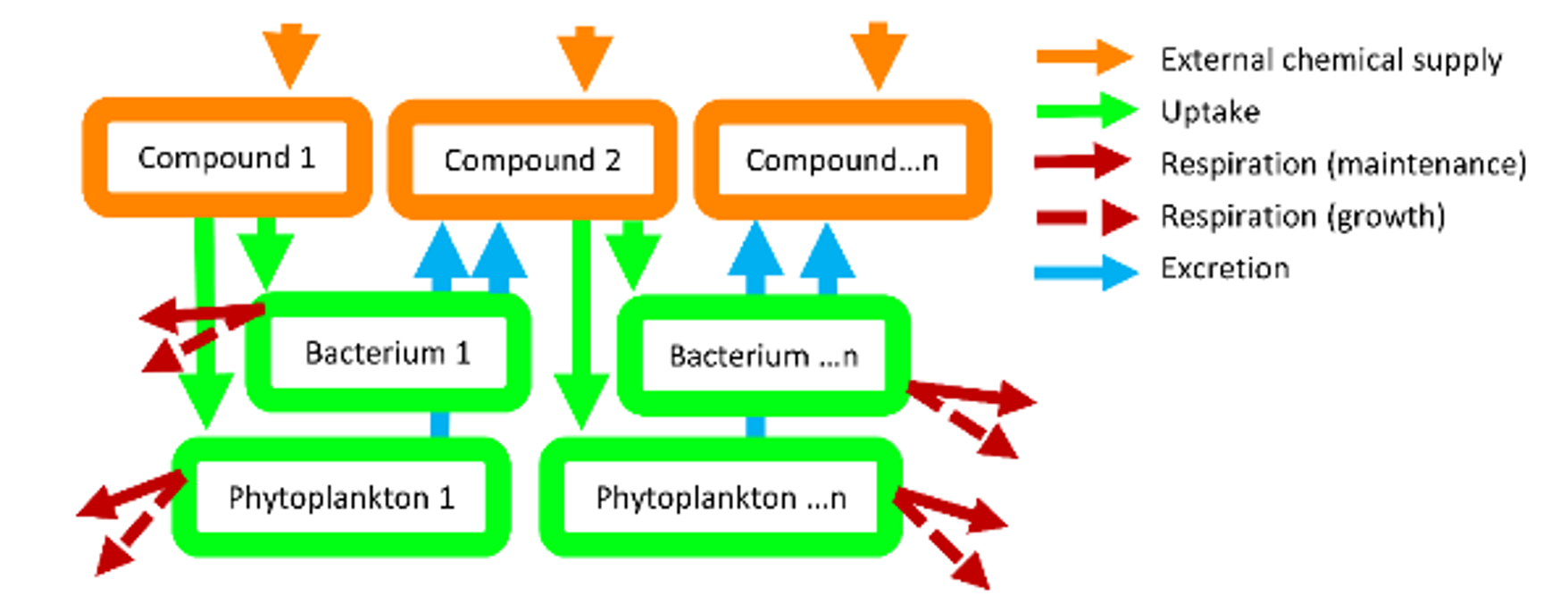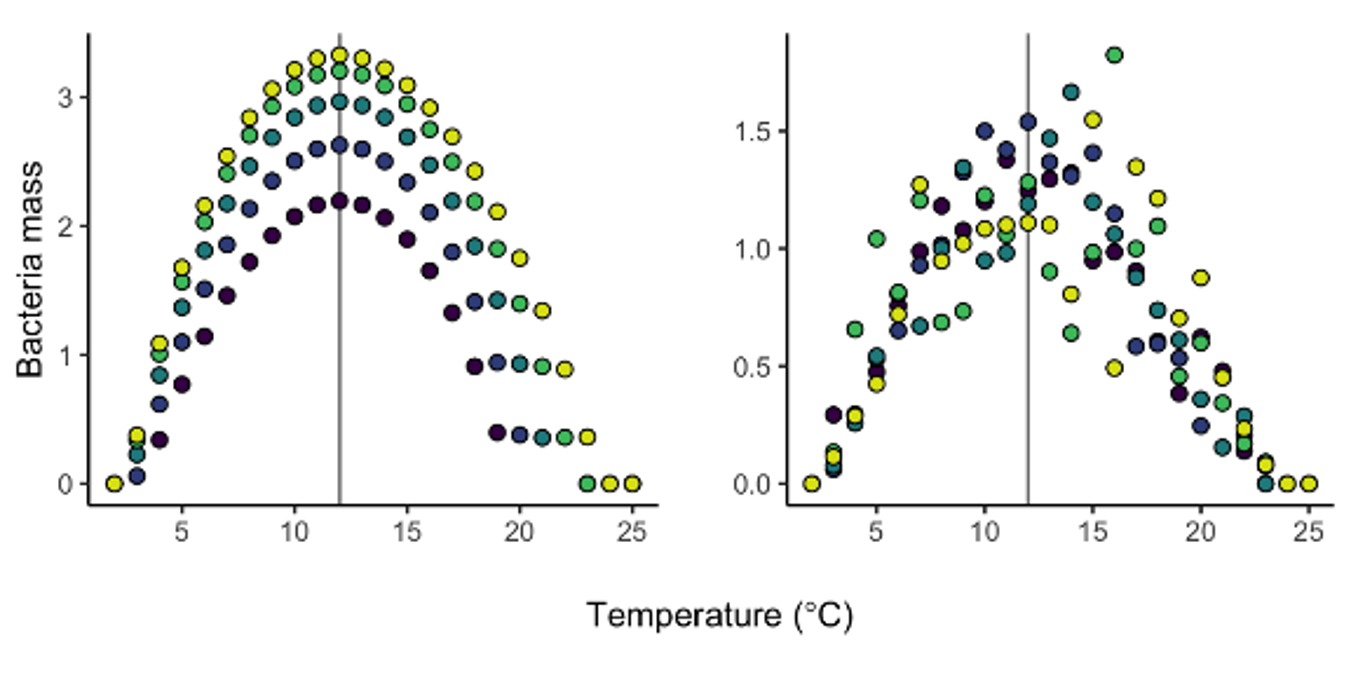WP5 – Modelling to predict current and future scenarios
Research Team
- Dr Samraat Pawar (Work Package Lead) - Imperial College London
- Dr James Rosindell - Imperial College London
- Dr Emma Cavan - Imperial College London
Aim
Simulate impacts of chemical stressors on freshwater ecosystems
Working plan
- The starting model will be chemical-bacteria and it will be parameterised using data collected from existing databases
- Data will be collected from previous experiments and used to identify the impacts our chosen chemicals have on a range of organisms
- Apply scenarios which include climate change stressors (e.g. warming)
- Use data generated from experiments to validate the model
- Simulate future scenarios
- Extend to more complex food webs
Our model
Both nutrient uptake and respiration will be explicitly parameterised as a function of individual traits of the organisms – e.g. resistant/susceptible to chemical stressors, large/small microbe, high/low metabolic temperature sensitivity. Figure 1 is a visual representation of our model, showing how chemical compounds (e.g. pesticides) and microbial groups (bacteria and phytoplankton) interact with one another. Figure 2 show the results of the initial chemical-bacteria model.

Fig. 1 A visual representation of our model. Orange arrows indicate an external supply of chemicals into an ecosystem. Green arrows represent pathways of uptake by the bacterial and phytoplankton communities. Blue arrows indicate the excretion of a secondary compound by the microbial community. These compounds are the metabolic waste products of the starting chemical compound. Red arrows indicate energy lost through respiration by growth or maintenance

Fig. 2 Results of the chemical-bacteria model without (left) and with (right) competition for nutrients. The colours represent different group of bacteria which vary in their response to chemicals. In the more ‘natural’ scenario (i.e. right plot with competition), variability is introduced as bacteria that are less sensitive to chemicals outcompete the sensitive bacteria